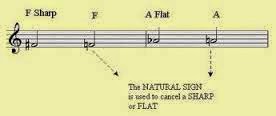I first learned the term “narrative analysis” from Mike Siciliano. The style of analysis made so much sense to me. It was one of those things that you learn, and after you learn it, you say, “Hey, someone made a name for the thing that I’ve already been doing intuitively.”
Here is a sample of my style of narrative analysis from an early post.
When I teach theory, I will often take at least one day to analyze a piece in this style. Yesterday, I had a composition bring in some early George Crumb songs. We sat down and looked at them together. I showed him how Crumb was completing the aggregate in one section and withholding a structurally significant pitch until the right moment.
When we started looking at the next movement, I read through it, and I decided that a narrative approach would best open up the music for him. I told the story of the music as the epic struggle of an A flat that accidentally gets naturalized. It continuously attempts to return to an A flat through a chromatic line. Every time it gets re-set, something goes wrong and it becomes an A natural again.
After hearing me go through the piece, the student said something like, “Wow. That’s really amazing. It lets you understand that there is an actual emotional thing going on between notes.”
In a way, no matter how erudite and sesquipedalian our terminology becomes, I don’t think musical analysis should ever be far from discovering simple musical truths like this. I’m going to make sure I include some more of this type of analysis in my lessons this semester.
I’m still anxious to hear what experiments other people are doing. Send me a note.

Recent Comments